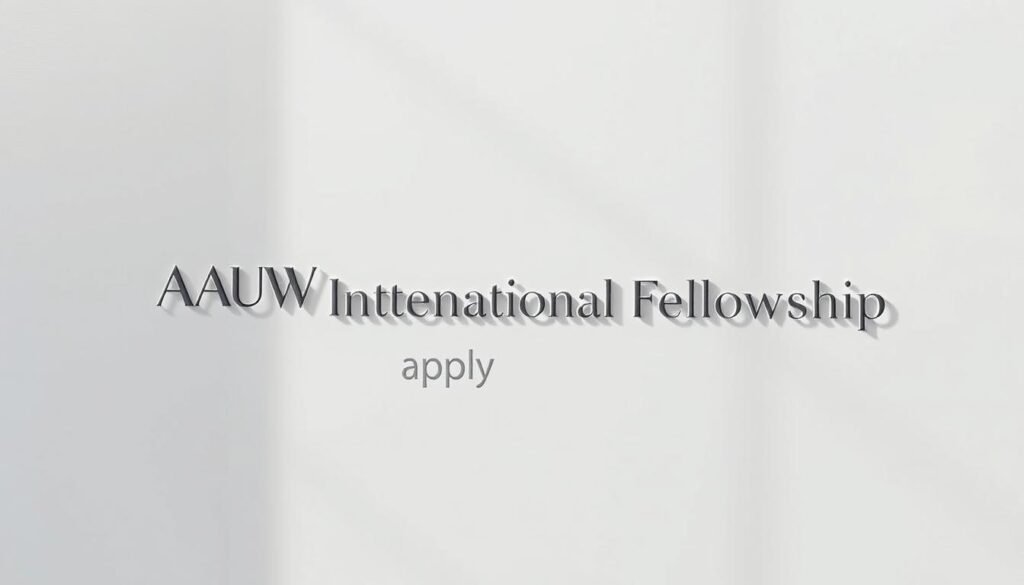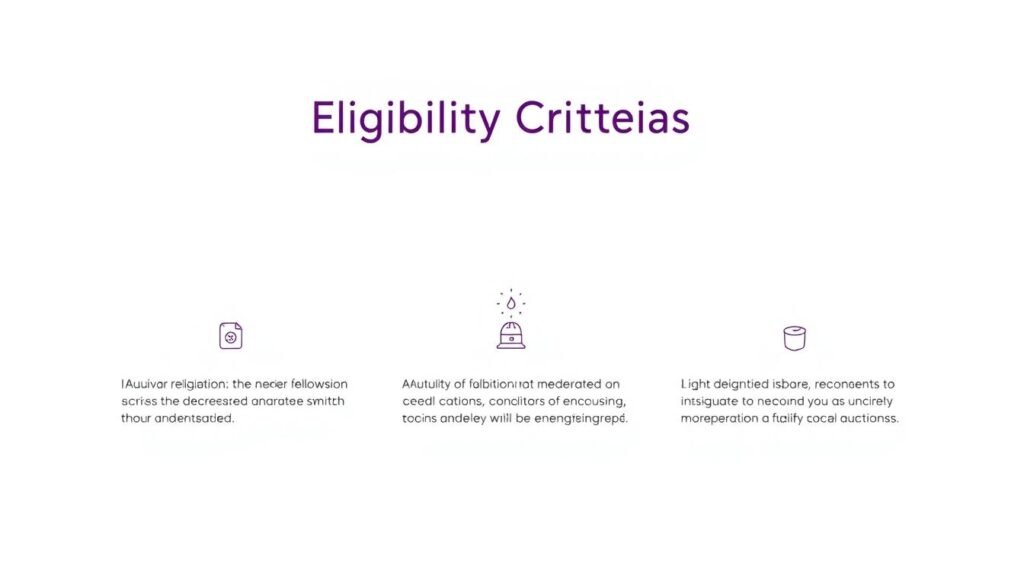
You are planning graduate study in the United States, and this program supports women who are not U.S. citizens or permanent residents. The awards fund full-time master’s, doctoral, or postdoctoral work at accredited schools.
Stipends have recently been about $20,000 for master’s, $25,000 for doctoral, and larger amounts for postdoctoral awards, paid in two installments. You must hold a 3.5 GPA (or official conversion) and be admitted or enrolled when you submit your application.
You may list up to five programs but must enroll in one if selected. Full-time study is required; most grants are one-time awards with a few two-year exceptions.
Deadlines are strict and late files are not reviewed. Visa sponsorship is not provided, and certain costs like research assistants, loan repayment, publication fees, overhead, and dependents’ tuition are not covered.
Read on for clear, step-by-step information so applicants can prepare a competitive application and budget for the year of study or research ahead.
What the AAUW International Fellowships Are and Why They Matter for Your 2025 Plans
This fellowship helps women from your country pursue full-time graduate or postdoctoral study at any accredited U.S. institution. It does not limit you to certain schools or narrow fields, so you can choose a degree or research program that fits your goals.
The selection emphasizes academic excellence, professional promise, and a clear commitment to advancing women and girls. Reviewers weigh transcripts, potential impact, and how your goals align with the program mission.
Decisions are typically announced in April, so plan admissions, visas, and relocation well in advance of the academic year. Being part of this network can boost your leadership and long-term career trajectory after the degree.
- Wide range of fields: STEM, social sciences, humanities, business, law, and the arts.
- Strategic timing: Align your applications and statements with the selection cycle for the year ahead.
- Mission fit: Frame your narrative to show how your study will benefit women and your home country.
Eligibility Criteria You Must Meet Before You Apply
Start by checking the key residency and academic requirements that determine if you qualify. This section summarizes the core eligibility criteria you must meet before submitting your materials.
Citizenship and residency
You must not hold U.S. permanent residency. Individuals with permanent resident status are ineligible even if they hold another citizenship. Confirm your current passport and visa status early.
Academic degree and GPA
Applicants must hold the right prior degree for the track you seek. For a master program, the CGPA must be based on the equivalent of a U.S. bachelor degree. For a doctorate, the CGPA is based on your highest academic degree.
Applicants must also meet a minimum 3.5 CGPA on a 4.0 scale. If your school uses a different scale, convert via Scholaro, WES, or ECE and include official documentation.
Admission, program type, and enrollment
You must be admitted to or enrolled in at least one accredited U.S. program at time of submission. Only full-time study or research in the United States qualifies.
- One program type in one field only (first master or first doctorate).
- Verify your institution is accredited U.S. to protect eligibility and funding.
- Check additional criteria such as English proficiency and intent to return home.
Note: Review these criteria carefully so your academic degree, transcripts, and enrollment proofs align with the requirements of aauw international.
Award Amounts, Covered Costs, and Prohibited Expenses
Know the exact award amounts and rules so you can build a realistic budget for study or research in the United States.
Typical stipend levels and disbursement
Stipend amounts are fixed by degree: roughly $20,000 for a master degree and $25,000 for a doctorate, paid in two equal installments at the start and midpoint of the term.
Postdoctoral research awards are higher about $50,000 for one year to support intensive project work and output.
What you can and cannot use funds for
Allowed costs include tuition charges to your host institutions, standard fees, housing, insurance, and direct research expenses that benefit your degree program.
Prohibited uses include hiring research assistants, repaying prior debts or personal loans, covering publication fees, charging institutional overhead, and paying dependents’ tuition. The sponsor does not provide visa sponsorship, though an award letter may support visa paperwork.
- Applicants must plan budgets that exclude disallowed items.
- Use this information to craft a compliant budget that strengthens your fellowship request.
2025-2026 Timeline: Application Window, Decisions, and Fellowship Term
Plan your submission around a strict application window to avoid missing the deadline. Recent cycles show a typical submission period of Aug 1–Sep 30. Treat that window as immovable; late files are not reviewed under any circumstances.
When to submit and deadline discipline
Build a backward timeline for tests, recommendations, and credential evaluations. Finish uploads early so technical issues won’t block your application.
Notifications, disbursements, and term dates
Notifications typically arrive by April 15. The fellowship year often runs July 1–June 30. The first stipend is paid July–September, with the second payment in January.
- Interim report: due Dec 15.
- Final report: due by July 31.
- Watch for a transition to a new awards system and follow official guidance to avoid processing delays.
Coordinate institutional enrollment dates and U.S. visa appointments so you can begin the program on time. Use these dates to align your budget and travel plans for the year ahead.
Documents to Prepare Early for a Complete Application
A complete package starts with verified transcripts and clear proof that your prior study matches U.S. degree standards. Gather documents early so reviewers can confirm your academic record and conversion quickly.
Transcripts, conversions, and proof of degree
Order official transcripts that show a CGPA on a 4.0 scale or include a recognized conversion. Accepted methods include evaluations from WES or ECE, or Scholaro’s GPA tool, with full course breakdowns.
English tests, recommendations, and enrollment proof
Schedule TOEFL or IELTS early so scores arrive before the deadline. Ask recommenders for evidence‑based letters and give them your CV and statement draft. You must be admitted to or enrolled in at least one program when submitting; you may list up to five accredited U.S. institutions.
Statement of purpose and CV
Draft a concise statement that shows research plan, academic fit, and impact. Name files clearly and follow upload specs to avoid delays during the review process.
- Key steps: secure transcript conversion for an equivalent U.S. bachelor, verify enrollment, and track every document.
- Keep a centralized checklist and use the detailed program page for final information on uploads and deadlines.
AAUW International Fellowships apply: Step-by-Step Process
First, verify your basic eligibility and make a long list of accredited U.S. institutions and suitable fields. Confirm GPA conversion, admission status, and English scores so you can close any gaps before the portal opens.
Next, build your application strategy while the new awards system is finalized. Map timelines for essays, recommendations, and document conversions. Track system updates and rehearse the submission flow with a checklist.
Complete the online application precisely. Upload certified transcripts, proof of enrollment, and recommendation letters in the specified formats. Applicants must ensure every field matches supporting documents to avoid review discrepancies.
Submit several days before the deadline. Monitor your email for confirmation and clarification requests during the review period. Save copies of all submitted files and keep contact details for listed institutions handy.
«Plan early, follow the portal instructions closely, and submit a complete file well before the deadline.«
- Confirm eligibility and list accredited U.S. institutions and fields.
- Map requirements against your profile and prepare missing items.
- Draft essays, secure recommendations, and format documents for upload.
- Rehearse the submission, submit early, and monitor review updates.
Rules and Restrictions That Can Make or Break Your Application
Understanding hard limits on degrees, residency, and enrollment is essential. Follow these rules closely so your file remains valid throughout the review and award year.
First degree requirement
You must be pursuing your first master’s or your first doctorate. Holding or earning an equivalent prior degree before or during the award year will make you ineligible.
Program type, field, and institutions
Choose one program type and one field only. Do not list multiple degree types or cross disciplines.
- List up to five accredited institutions.
- Enroll in one of those listed if selected; switching to an unlisted institution voids the award.
- Pick institutions strategically to match your study and career plan.
Residency, research travel, and full-time status
Full-time enrollment is mandatory for the entire fellowship year. Short research travel outside the country of study is allowed, but absences longer than six months usually break residency rules.
«Verify degree status, stay in one program type, and plan research travel to protect your funding.«
How Selection Works and How You Can Stand Out
Panelists reward applicants whose records and goals show they will advance women and girls after finishing a degree. Your file is scored on academic performance, demonstrated professional promise, and a clear commitment to community impact.
What reviewers value
Academic achievement: List measurable results GPA, publications, awards that prove you can handle graduate work.
Professional promise: Show leadership roles, internships, or work that point to future influence.
Commitment to women and girls: Provide concrete examples of mentoring, advocacy, or programs you led or sustained.
How to strengthen your case
Align your research or study plan with specific outcomes for your field and home community. Be clear about how the fellowship will help you reach those milestones.
- Highlight measurable academic milestones and relevant outputs.
- Document leadership with outcomes, not just titles.
- Make your commitment concrete with dates, roles, and impact.
«Frame your goals so reviewers can see a credible path from study to measurable community impact.«
Finally, ensure recommenders confirm your academic rigor and leadership. Proofread the entire application so reviewers find a consistent, professional narrative that fits the program and fields you target.
Budgeting for Life in the United States on the Fellowship Stipend
Map out basic living costs now to avoid financial distractions during your research and study year.
Typical monthly living costs
Estimate a realistic monthly budget using common ranges for the united states. Use these to plan and compare cities and campuses.
- Housing: $800–$1,500
- Food: $300–$500
- Health insurance: $100–$200
- Books & supplies: $100–$200
- Transportation: $50–$150
- Personal: $100–$300
Typical totals range from about $1,350 to $2,650 per month depending on location and lifestyle.
Strategies to stretch your stipend
Plan around the stipend’s two disbursements. Set aside funds for initial deposits, furniture, and devices before the first payment arrives.
Compare on-campus versus shared off-campus housing, use student transit passes, and rely on library reserves to cut costs. Seek departmental micro-grants for research needs and avoid budgeting for prohibited expenses like publication fees or hired help.
«Build an emergency buffer for co-pays and essential travel so your focus stays on study and research.«
As applicants, gather this information early to shape a realistic application budget that protects your work and wellbeing in the country.
Your Next Steps to Get Ready and Submit a Strong Application
Begin with a simple checklist that lists every document, deadline, and credential step for your application. Add buffer days for GPA conversions, test reporting, and recommender uploads.
Reconfirm eligibility: you must be seeking your first master’s or first doctorate, enroll full time at an accredited U.S. institution, and not hold U.S. permanent residence.
Finalize your shortlist of fields and institutions, secure admission proof, and polish your statement of purpose and CV to highlight leadership and impact on women and girls.
Coordinate referees, submit early in the window, confirm receipt, and track status. Monitor the Fellowships & Grants page for new system updates and keep a professional record of all communications to prepare for the year ahead.
(FAQ) – Everything You Need to Know
Frequently Asked Questions – Women’s Fellowship 2025
What is the fellowship and who should consider it for 2025?
This fellowship supports women from other countries to pursue full-time graduate or postdoctoral study in the United States. You should consider it if you hold a bachelor’s equivalent, plan to enroll or continue at an accredited U.S. institution, and want funding that recognizes academic and professional promise.
Who is eligible based on citizenship and U.S. residency?
You must be a national of a country other than the United States and not a U.S. permanent resident or citizen. Refugees or other special-status residents should check specific rules; most applicants must demonstrate intent to return to their home country after the fellowship term.
What academic degree and GPA do you need before applying?
You must hold a bachelor’s degree or its equivalent from your home country. The program expects an academic record that converts to at least a 3.5 on a 4.0 U.S. scale. Provide official documentation and a clear conversion or evaluation if your grading system differs.
Can you apply if you already have a master’s or doctoral degree?
No. The award funds a first master’s degree, first doctoral degree, or postdoctoral research only when those credentials have not been previously earned in the same category. Equivalent prior degrees may disqualify you.
What program types and enrollment status are required?
You must pursue a graduate degree or approved postdoctoral research at a U.S. accredited institution and enroll full time. Professional certificates or part-time study generally do not qualify.
How much funding is available for master’s, doctoral, and postdoctoral work?
Stipend levels vary by degree level and institutional costs. Funding typically covers living expenses, tuition, and health insurance, with higher awards for doctoral and postdoctoral fellows. Refer to the published schedule for estimates.
What expenses are explicitly not covered by the award?
You cannot use the award for research assistants’ salaries, repayment of prior debts, publication charges, or tuition for dependents. Review the prohibited expenses list carefully.
When is the application window and what deadlines must you meet?
The application window opens annually; for 2025 you must submit by the posted deadline. Late or incomplete applications are typically not considered.
How and when are applicants notified and stipends disbursed?
Applicants are notified by email after the review process. Stipend disbursement depends on coordination with your institution and may require enrollment verification or reports.
What documents should you prepare early to complete your application?
Prepare transcripts, proof of bachelor’s equivalency, GPA conversion, English-proficiency scores if required, letters of recommendation, proof of admission/application, statement of purpose, and an updated CV.
How do you demonstrate that your bachelor’s is equivalent to a U.S. degree?
Provide an official credential evaluation or institution-issued documentation showing degree level and course content. Include grade conversions and explanatory notes if needed.
What should your statement of purpose and CV emphasize?
Emphasize academic achievement, research or study goals, leadership, and measurable impact. Show a commitment to advancing women and girls and a clear plan for success in the U.S.
What are the step-by-step actions to complete your application?
1. Confirm eligibility. 2. Select accredited U.S. institutions. 3. Assemble documents. 4. Request recommendations. 5. Prepare your statement and CV. 6. Submit via the online portal before the deadline.
Can you list multiple institutions or programs on the application?
Yes. You may list up to five institutions, but you must choose one program type and field for your request. Ensure each institution is accredited and appropriate.
Are you allowed to conduct research outside the U.S. while holding the award?
No, the fellowship requires full-time commitment in the U.S. Limited exceptions may apply with prior approval.
What selection criteria do reviewers prioritize?
Strong academics, professional promise, leadership, feasibility of your project, and commitment to advancing women and girls are key priorities.
How can you strengthen your application beyond grades?
Show leadership, community impact, and future contribution. Secure strong recommendations, present a clear research plan, and highlight measurable outcomes.
What are typical monthly living costs you should budget for in the United States?
Budget for housing, food, health insurance, transportation, and incidentals. Costs vary by location; urban areas are typically more expensive.
What strategies help you stretch your stipend while focusing on study?
Consider campus housing, meal plans, health services, scholarships, or part-time campus jobs (if allowed). Focus on essential expenses.
What rules can disqualify your application at the review stage?
Disqualifiers include missing documents, GPA issues, prior equivalent degrees, part-time enrollment, or unsupported program types. Follow all instructions precisely.
After submission, what are your next steps to stay prepared?
Check your email regularly, keep referees updated, confirm admission status, and prepare for visa/travel requirements. Respond quickly to any requests.

